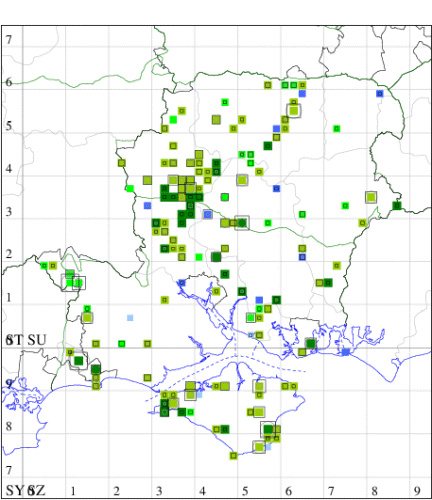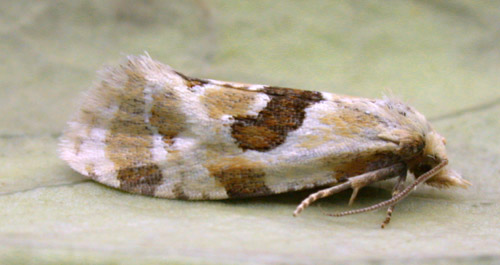Aethes rubigana
Checklist Number49.128 [B&F: 0946]
Verification
Record will normally be accepted but photo evidence may be required - check with CMR if not sure of identity
Classification
| Family: | Tortricidae |
| Subfamily: | Tortricinae |
| Genus: | Aethes |
| Species: | rubigana |
| Authority: | (Treitschke, 1830) |
Common on waste ground and dry open areas throughout the British Isles. In our area reasonably well-distributed, including the Isle of Wight in recent years. Wingspan 15-19 mm. Distinguished from A. cnicana by its usually larger size and the broader, more oblique and almost invariably clearly interrupted, median fascia of the forewing [Bradley]. Larva feeds within seedheads of Greater and Lesser Burdock.


The abundance in each month is indicated as follows:
 No records
No records Very occasional
Very occasional Irregular
Irregular Uncommon
Uncommon Off-peak, but not unusual
Off-peak, but not unusual Off-peak, but not unusual
Off-peak, but not unusual Main flight time
Main flight time| J | F | M | A | M | J | J | A | S | O | N | D | |
|---|---|---|---|---|---|---|---|---|---|---|---|---|
| Adult |  |  |  |  |  |  |  |  |  |  |  |  |
| Larval |  |  |  |  |  |  |  |  |  |  |  |  |


